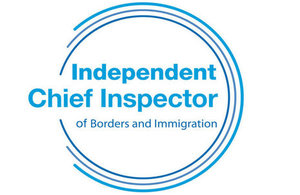An inspection report on how the Home Office deals with illegal working
The Chief Inspector, David Bolt, has published his report on how the Home Office deals with illegal working, conducted between October 2014 to March 2015.

There are no reliable estimates for the numbers of migrants working illegally in the UK. They try to stay beneath the radar, and their employers are either negligent in respect of their obligations to check their employees’ ‘right to work’ or complicit in hiding such work from the authorities.
The Home Office acknowledges, and there is broad acceptance, that the actual and perceived ease of finding paid work is a significant ‘pull factor’ for migrants looking to enter the UK illegally or to remain here without the legal right to do so.
This inspection focused on the efficiency and effectiveness of efforts by the Home Office’s Immigration, Compliance and Enforcement (ICE) teams to tackle known and suspected instances of illegal working. ICE teams are part of Immigration Enforcement Directorate (IE). They have powers to interview, arrest and detain immigration offenders found working illegally.
The inspection looked at whether these powers were being exercised in accordance with the law and with Home Office guidance. It also looked at the effectiveness of the IE team levying civil penalties against employers who had failed to comply with all regulations.
Prior to 2014, the primary focus for ICE teams was enforcement visits to businesses, mostly restaurants and takeaways, to locate and arrest illegal workers with a view to their enforced removal from the UK. In 2014, the emphasis shifted to ‘educational visits’ to encourage employers to comply with their obligations, and as a result to deny illegal migrants easy access to paid work and increase the numbers leaving the UK voluntarily.
The comparative effectiveness of this ‘new’ approach was hard to assess. However, the Home Office’s interim evaluation of an operation in the areas with the highest known numbers of illegal workers indicated that it had increased voluntary departures.
Alongside this, the Home Office had identified and implemented, or had begun to implement, a number of improvements in related processes, for example: widening the allocation of biometric residence permits to make it easier for employers to check employees’ status; reviewing operational guidance and making it more accessible; enhancing local assurance regimes.
The inspection confirmed the need for these improvements and others. It found weaknesses and inconsistencies in operational training and practice.
For example, after initial training, new ICE team members were mentored within their team, but this was not supported centrally and therefore varied in content and quality. Detailed examination of 293 official notebooks and other records identified poor record keeping and failures to comply with guidance (and, in some instances, with legislation) in relation to obtaining lawful entry to premises, pursuit of individuals away from target premises, cautioning, questioning and use of handcuffs.
The report makes 8 recommendations with an emphasis on operational training, supervision and assurance.
The report was sent to the Home Secretary on 28 October 2015.